A game of mystery, exploration, and horror.
The original Mansions of Madness was great fun, but it had a few issues: excessive fiddliness, long preparation, setup and pack up times, and most egregious of all, a few gaping errors in its scenarios. But for older gamers like me, it harkened back to the old days when you had to put a bit more effort into a game to see it shine.
Mansions of Madness Second Edition is a completely different beast, because all the fiddliness and effort has been swept away by tying the game to an app. And despite my initial misgivings, the game really is more fun for it. Sure, I still have a nostalgic twinge of sadness for the complexity of the original, and I’m still not a big fun of introducing apps to my wonderful tech-free hobby, but the plots are more cohesive and the whole experience smoother.
Sadly, the crappy miniature design from first edition remains. Understandably I suppose, so first edition users can still use their old figures and map tiles, but a shame as they really are sub-par. My only other misgiving is the excessive amount of text that players have to read out, but that’s par for the course for this kind of game.
But when it comes down to it, most of the first edition scenarios will sit on my shelves unplayed, as this new edition is the one that will hit the table when I’m feeling like a wander through an old dark house at imminent risk of my sanity and health.
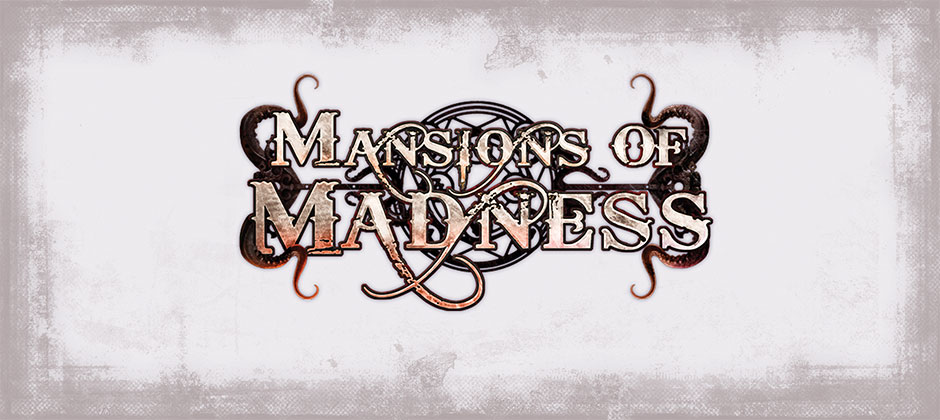
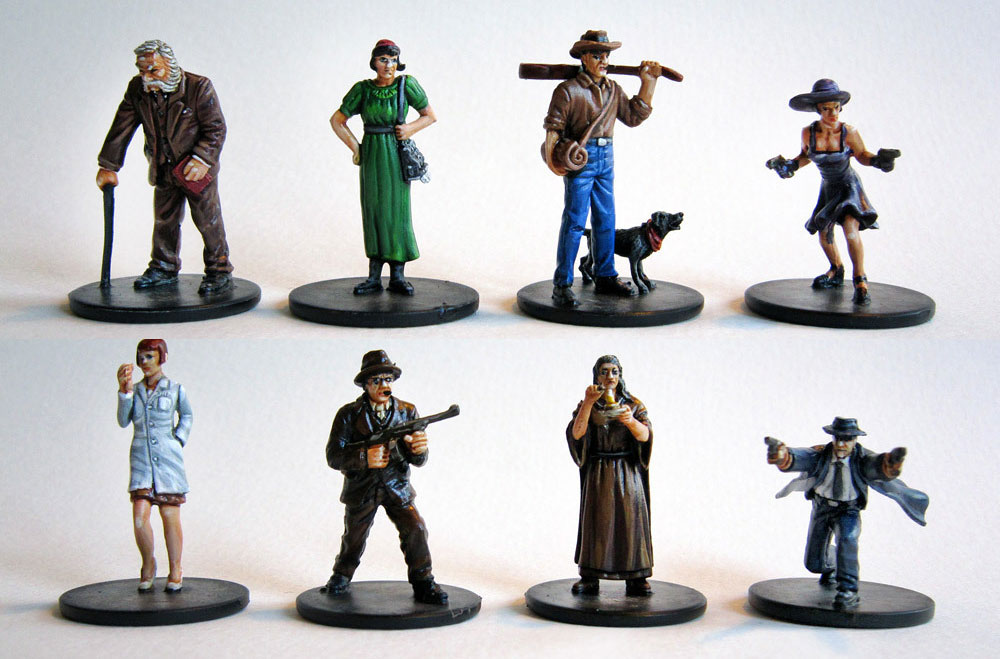
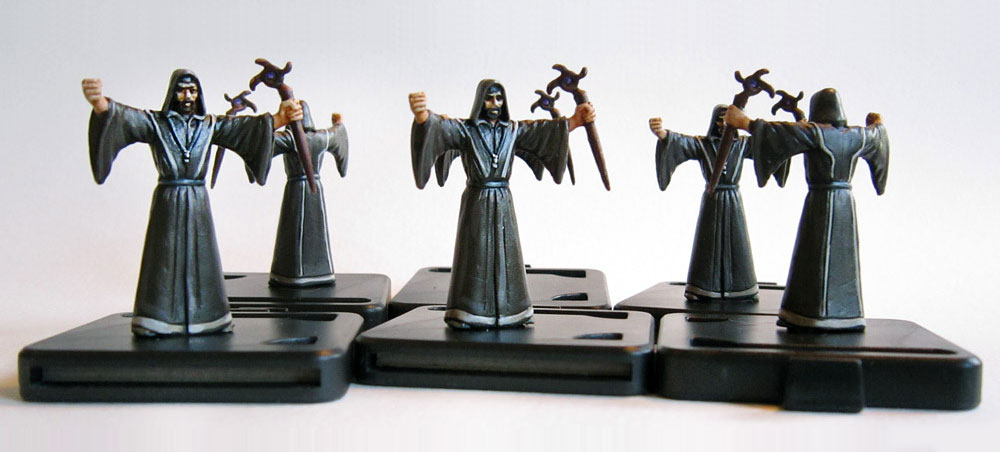
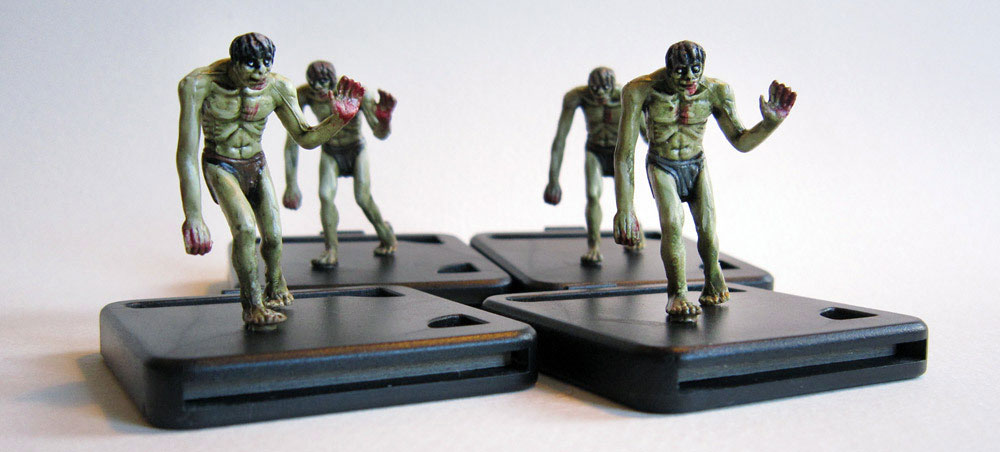
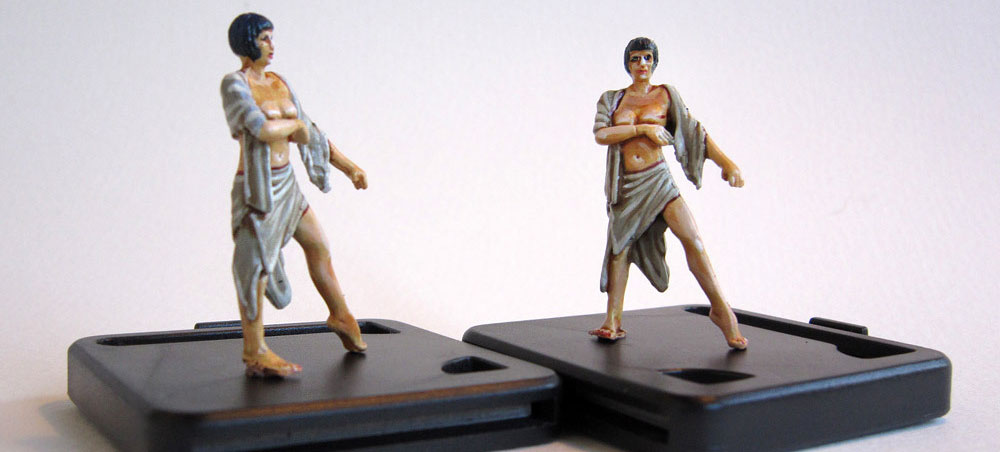
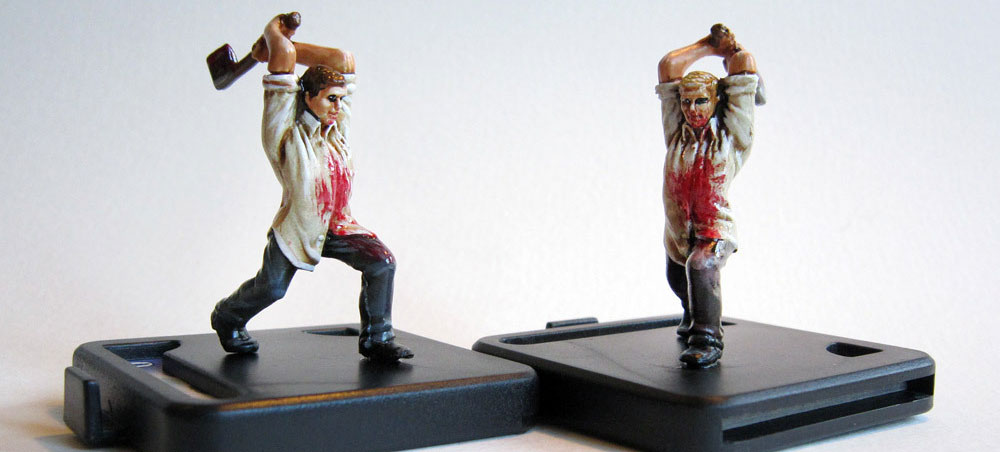
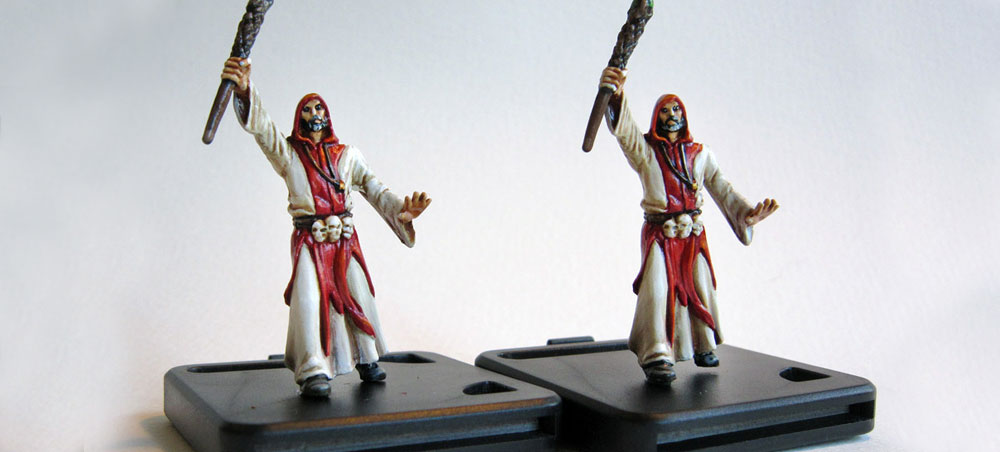
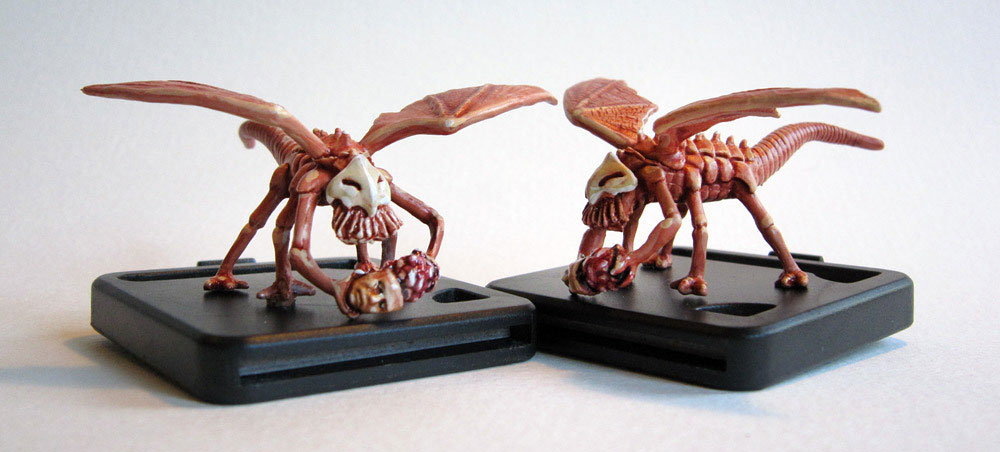
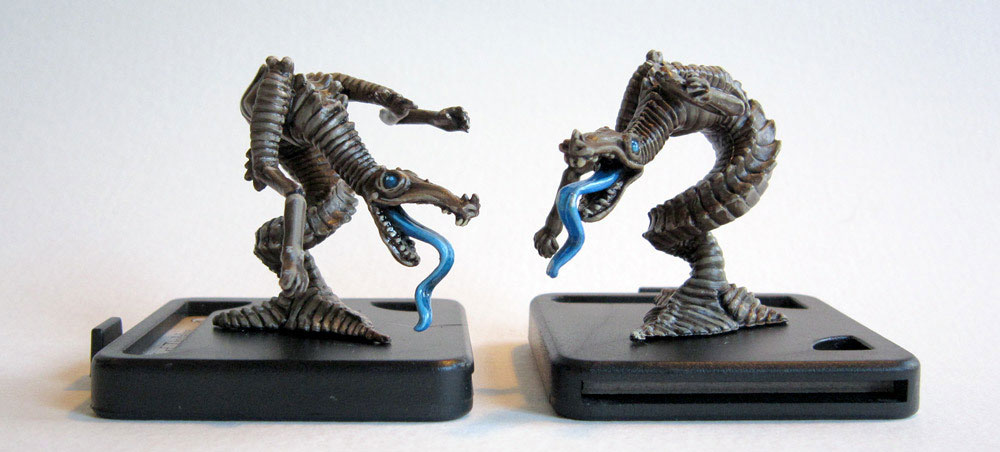
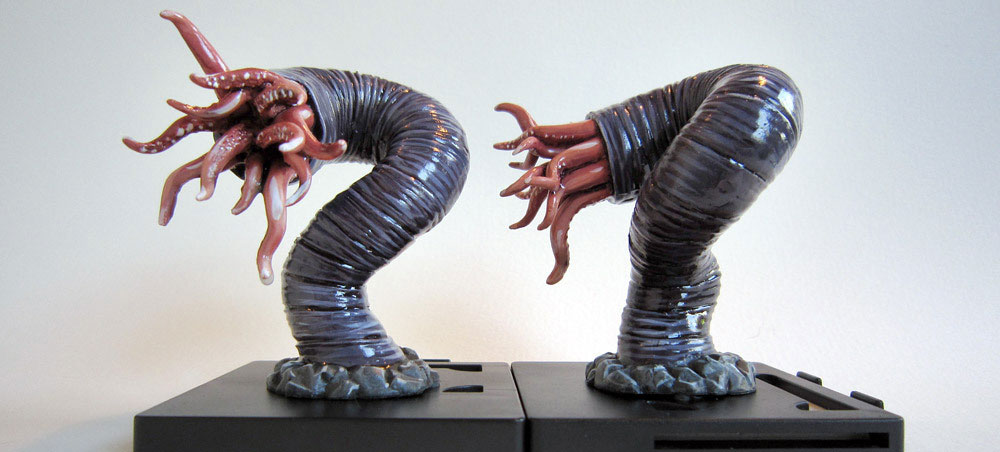
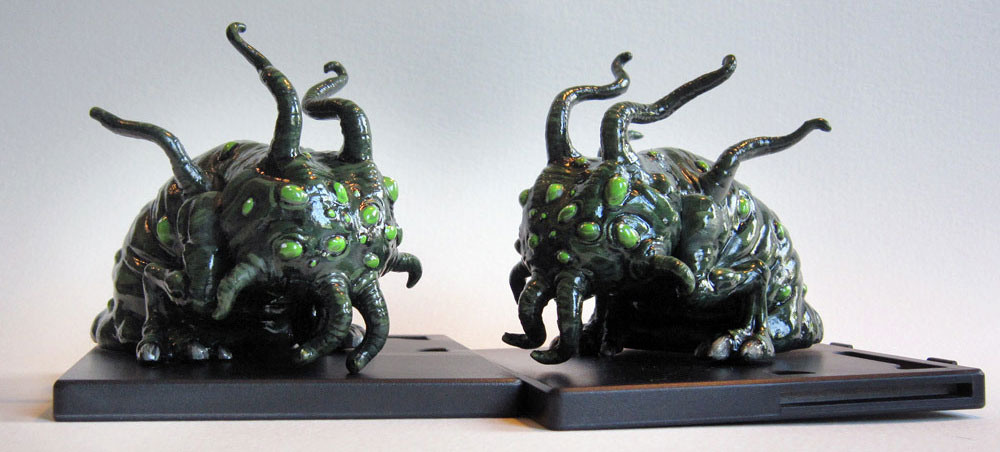
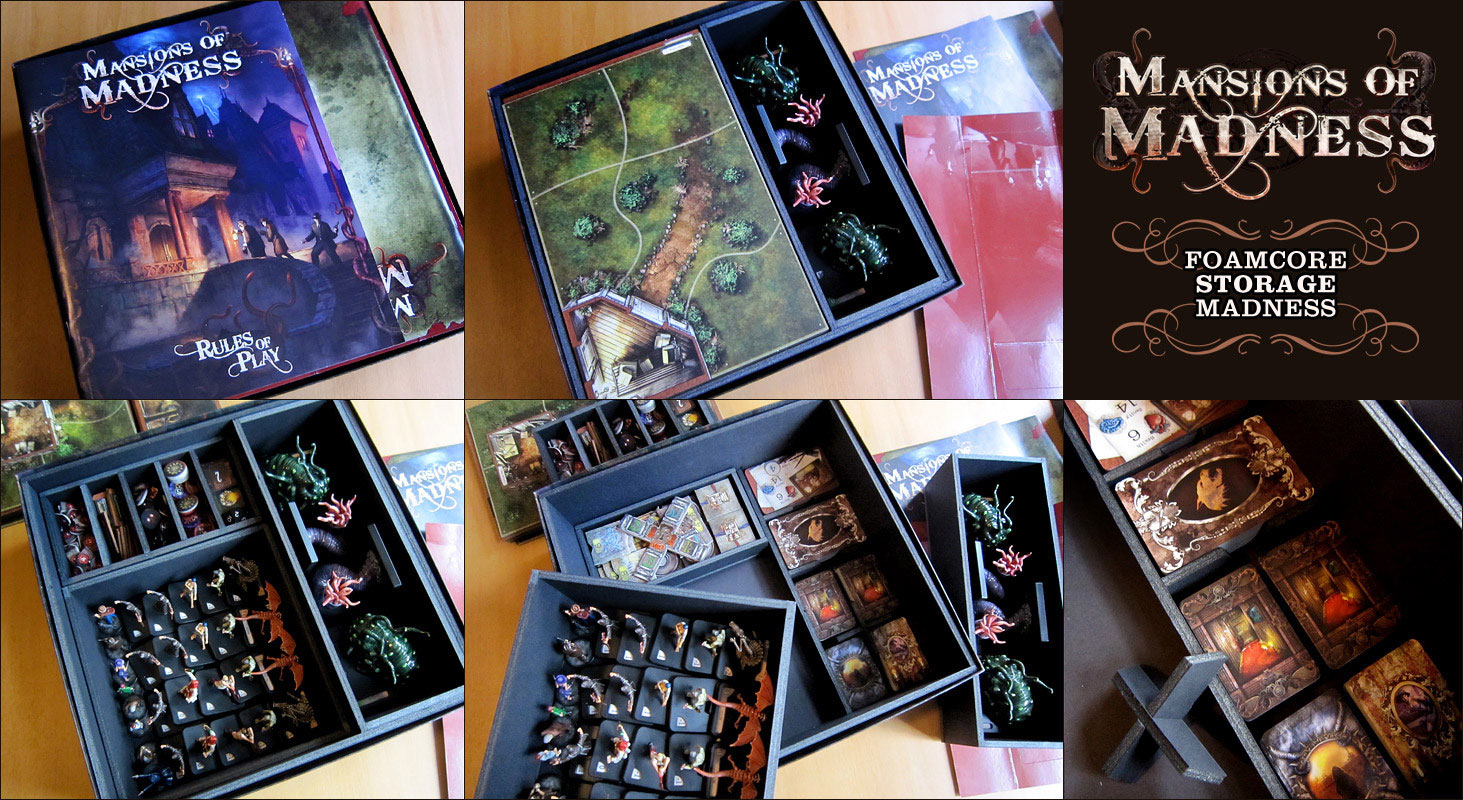
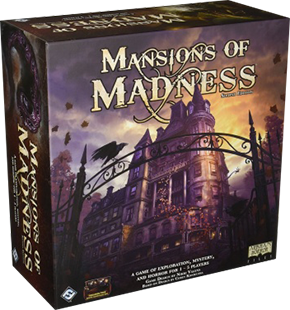
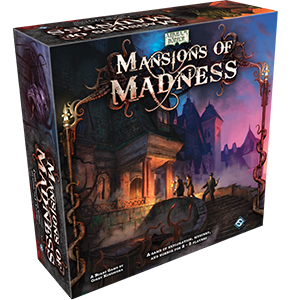
Hiho!
thanks for your great painting guide!!!! But could you please make a guide for your foamcore insert? The Idea with the removable inlays is great and I would appreciate it if youl could show us how to rebuild it.
Greetings from Germany
Thorben
Sure Thorben, that’s definitely in the works for the near future. Stay tuned…
Will you be posting the plans for the foam core insert?
Yes I will — keep an eye peeled, it will be the next set of plans to be posted. Sorry it’s taken so long!
Hey, no worries. Quality work like what you put out takes time.
Thanks for the plans! I use sleeved cards ( FFG sleeves ), so had to modify the plans quite a bit to get them to work with this setup, but used your ideas and just shifted things around in the box to make it work.
Hey Steve, I also use sleeved cards and are thinking on building these inserts. Do you have any suggestions on how to modify the plans to fit the cards? Thanks in advance.
Sorry it took me so long to approve that comment Sergio, I’ve been ill.
No problem, I hope you feel better.
Well done! All my plans are just suggestions, so it’s good that people can play with the design to get exactly what they want.
Not as nearly as great as yours, but check out how my miniatures came out like:
https://plus.google.com/photos/117874540158930459105/albums/6011524253138608977
It was my first batch of painted miniature, a lot to improve, but I’m a poor engineer that struggle with art concepts!
As you may see, I was inspired by a couple of your miniatures.
I just need now to put all them on the table to play 🙂
First batch? Wow, they look fantastic! Well done, and you’ll only get better and better as you paint more. Good one Pedro.
I built the insert using your plans yesterday and I have to say it turned out wonderfully, especially for my first time using foamcore. http://imgur.com/a/9axNS
Next step is to try my hand at painting!
Excellent, nice work! Always good to see the plans in action.
Love the designs….one question, however. Do the foam core insert plans allow for the addition of the parts from the expansions, or would I need to tweak the measurements/get a different box?
I doubt you’d be able to fit them all in one box. This design is just for the core game and I just managed to fit all that in!
Thanks for the foam core guide. Made my very first one last night for my new mansions game. Much better than bagging all the pieces. Going to try your painting guide for the miniatures too.
Great to hear Mike!
Making this insert this weekend! I was curious though, do you glue your figures to their base? I find it hard to get some of the pieces in their stand and then if they go in thier stand to stay in place, so I was going to glue them all. After looking at your pictures though it seems that the giant worm things are not glued to their base. Just curious before I go gluing everything. Next up paint? (maybe? someday).
Thanks
Yes, I do glue them (except for the worms and – in the expansion – the Dark Young as they wouldn’t fit in the box if glued).
FFG just announced a second edition of Mansions of Madness. APP driven and full co-op, so APP takes keeper role.
It comes with an upgrade kit to use first edition components and can be played solo, so I’m very interested in this.
So rare I get to play it, but solo interests me.
Very glad to hear about the upgrade kit. I love this game but I wouldn’t be keen to buy it all over again.
Fantastic that this game is getting some love!
I think the wording implied upgrade was included, not a separate item, but if there’s no repetition of tiles, new adventures, new monsters and new Investigators, it’s just a big box expansion with revised rules. I’m willing to buy that and just reject a few kickstarters I was watching to fund it.
More details this week. And well done FFG for keeping it a secret… HPL would be proud.
Yeah, I’ve read the announcement now. Oh well, as long as I can still use my base set, though it’s a shame all the expansion adventures I bought probably won’t get played now because of the new shiny thing. Surely the adventures in the new set will be different.
Descent app allowed Lieutenant pack addons, so I’m assuming the expansion adventures for MoM will be useful too. Maybe found out with other announcements this week.
Would love to see insert plans for V2 of the game! (We loved it so much, we rushed out and instantly bought v1 as well!) Any v2 plans in future? Loved your videos also btw – very excited to get painting!
I’m sure I’ll get around to it eventually!
Is there going to be a guide for Mansions of Madness 2nd Edition?
I don’t know yet. 🙂
I would definitely appreciate your effort on the 2nd Edition.
I’ve played this at least half a dozen times and although a rules reference always helps, the app does most of the work.
Oh… I misread that… what I was thinking of, were foamcore plans vor 2nd ed.
Finally got around to painting the miniatures from Beyond the Threshold and it was incentive enough to get me re-basing the rest of the miniatures. I had some spare 30mm bases lying around and managed to remove most miniatures (they were glued) without losing the stump to stick them into a new base. Some I had to cut from the base and pin instead.
Only done the humanoids so far and may not bother with the bigger creatures. I am considering using the rebased humanoids in Carnevale when that arrives.
I’m busy doing this too, and it’s a vast improvement. I’m not basing the large creatures at all.
Mainly referring to the monsters. Nightgaunts, Byakee etc
Oh – yeah, basing those.
Are you marking the bases with Awareness and Horror? I’ve been looking for some coloured sticker numbers and not found any that are appropriate.
Back up plan is either a master list of all monsters to refer to, or just keeping the card tokens handy.
I’ll just keep the tokens nearby.
Great Job… love your Player aids…..
Could you create a Monster reference cheat? I hate the bases an I put all mini on acylic base…
Maybe some flavor text would be nice also….
Thansk
I’ll put it on the (very long) list of things to do!